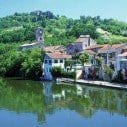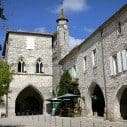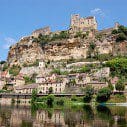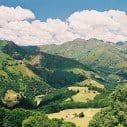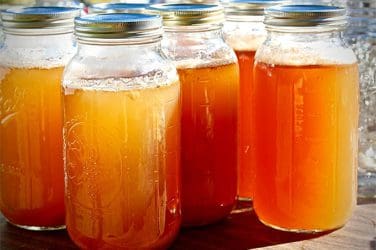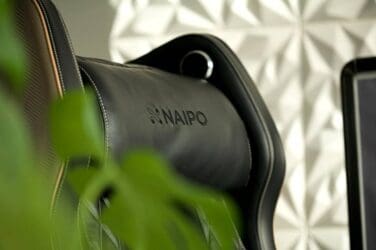How well can you know a place? In our mental geographies, we imagine we know France. After all, it’s only a short hop on the ferry, an hour and a half invariably spent sipping a coffee and dong a crossword or two before arriving on the continent. Read about our summer of travel in Aquitaine.
With the ever-widening diaspora of French cooking and the advent of cheap continental flights and online hotel comparison sites like trivago France has never felt so familiar. Or so I thought. Having begun to explore Aquitaine this summer, a remote and ancient province closer to the Basque country than to Paris, our closest continental neighbour suddenly became mysterious and unknowable once again.
Aquitaine is aided by possessing a long and distinguished history, a past which seeps through the walls of its fortress towns, lending a hidden depth to the quiet streets and alleyways. Three-quarters of France’s prehistoric sites are here, buried within the twisting valleys like hidden pathways to Pangaea; castles careen over the horizon, eloquent speeches to the ferocious Medieval battles which swung the region between the warring monarchies of England and France; and Baroque pre-Roman steeples sing their timeless song. A visit to Aquitaine is not unlike being surrounded by the fantastic motifs of a fairytale.
Not that you’d imagine such marvel upon arriving at Bergerac airport. Despite recent expansion, the runway is reminiscent of a country lane, and the arrivals portal is, essentially, a hastily-erected tent of corrugated iron, which reminded me of the lost-and-found zone at a music festival. The whole thing had a beautifully amateurish feel to it, as if someone set about implementing the spontaneous idea of setting up an international airport on a whim before knocking off for lunch after twenty minutes. But I’d take this over the tense and corporate snarling of Heathrow any day. Immediately upon leaving Bergerac airport, you feel halfway into the dark embrace of the countryside.
Within the walls of Sylvie Pragout’s farmhouse – Les Clos des Muriers – a robust and rustic temple of good food and wine, I felt immediately at home (www.leclosdumurier.fr). Proudly distant from nearby towns, self-sufficiency is provided by the ample produce of the fields, undulating softly away into the sky. Taking a deep breath, I’m taken aback by the rich smells of the summer air, redolent with lavender: living in London I keep forgetting that the atmosphere can have a scent pleasant and alluring, not just a habitat for pollution and smog.
If there is a more welcoming household in the south of France, it will take an imagination more vivid than my own to imagine it. Sylvie has taken the art of the hostess to new heights. She taught me that housing guests is not as frivolous an activity as you might think; in a thousand subtle ways, she created a relaxed and carefree environment for us, keeping us well-fed and entertained throughout. All smiles and laughter, Sylvie – a demure, charming woman with a beguiling passion for cooking – prepared a typically imaginative and satisfying meal for us upon our arrival. For a holiday to be truly calming and restorative, you must be around people who are calm and who put you at ease. For this alone, let alone the comfort and the cuisine, I’d highly recommend Sylvie’s inviting farmhouse if you are looking for accommodation in Aquitaine. It provided the ideal springboard from which to dive into one of France’s most intriguing and as-yet untouched cultural outposts.
The Lot et Garonne valley lacks the sprawling, elegant pomp of the Rhone or the Loire, and is all the better for it – the Lot careens gently westward until it merges with the pivotal Garonne, which segments a significant chunk of southwest France and casts its glance south-west, to the Pyrenees and the Iberian peninsula beyond. Historically, much of the culture south of the Garonne is closer to Spain than to the cosmopolitan centres of the north. It gives Aquitaine a curiously remote feel, tickling my appetite for exploration.
Remarkably, much of the valley’s heritage has survived intact. Penne d’Agenais, situated atop a hill overlooking the river Lot, feels situated in a distant and lost Europe: narrow, winding streets of cobbled stone, robust and striking battlements, and the impossibly grand Notre Dame de Peyragude basilica, a domed vision of Byzantine worship. For a village of miniscule size, La Maison sur la Place was unusually cosmopolitan (www.lamaisonsurlaplace.com). There’s a pristine, unspoiled feel to the place: the décor, minimalist yet alive with telling grace notes, is striking yet somehow also profoundly calm. Everything gleams snow-white, from the tablecloth to the whitewashed walls. It’s like dining in the beatific afterlife of an especially saintly and incorruptible nun, albeit with an excellent selection of unpretentious local wines. Fortunately this attention to detail extends to the food: self-consciously clever twists on traditional brasserie classics. Three course sat €32 is very reasonable for food of this caliber.
Nearby were the Latour-Marliac water-lily gardens, home to the most exotic and primitively massive species of water lilies (www.latour-marliac.com ). Three enormous Amazonian specimens sprawl imperiously inside a humid glasshouse like lime green cartwheels, while thick forests of bamboo surround the gardens. In the middle lie manicured ponds teeming with water lilies and tadpoles; observing the serene beauty of this unexpectedly tranquil garden, I’m unsurprised to learn that upon visiting, Claude Monet was inspired to design his own lily pond which provide the muse for his famous “Les Nymphéas” (White Lilies) series of oil paintings. My own artistic plunder consists merely of a few amateurish photos on my tacky Nokia, but rest assured this is a deficiency of my own creativity and not of the magnificent gardens.
Monflanquin is another fortress-town with an intrinsic and undeniable historicity to it, as if the landscape of the town lies determinedly in the past. Built as a military bastion, Monflanquin changed hands with the urgency of currency during the Hundred Years’ War. A guided tour of child-like enthusiasm swallows up followers, with passers-by swept into the dramatics of each theatrical scene (I, dressed as Prince Alphonse, and a group of amused Spaniards as various members of the Gallic monarchy) is led by the jester Janouille, a constantly mirthful and engaging guide blessed with the kind of slapstick cunning which can breathe life into the linear seriousness of a tour, a character straight out of the story-books. The town itself is like a living museum, with enormous mill-stone houses and tranquil plazas, with the magnificent site of the Lot valley looming into view around every other corner. Little craft shops and well-stocked larders of unsurpassable French wine and cheese complete our visit: a very pleasant way to while away an afternoon.
The main lesson seems to be that it is possible to eat very well in the south of France. Bistro Les Ganivelles, in the hamlet of Villebramar was a charming anthology of all that is best of gutsy French cooking: the application of intelligence to the pleasure of eating, but without the accompaniment of deliberate, urbanized pretensions at cleverness or art (http://lesganivelles.fr ). This isn’t haute cuisine or molecular gastronomy, and you don’t need to be Heston Blumenthal to understand what’s happening on your plate. Local produce – the fish, in particular, oozes with freshness – served in eye-poppingly hearty portions. It’s excellent value for money, and it’s what restaurants on both sides of the Atlantic should be emulating. Highly recommended.
This was only surpassed, perhaps, by Sylvie’s cooking lesson, where in a feat as profoundly surprising as a magician pulling a rabbit from a lifeless top hat, we amateurish journalists somehow prepared, with the assistance of a masterful chef and the irrepressible larder of Aquitaine, a three-course meal of outstanding quality (www.france-cookery-course.com).
It is also possible, just in case anybody believed otherwise, to drink very well while in Aquitaine. Caro Feely’s vineyard is unique: it is an unblemished model to organic farming, a definitive riposte to those who claim that organic wine is undrinkable (http://www.feelywines.com/index.html ) . During a late afternoon lunch, as Caro pairs each of her impressive wines with moreish charcuterie, her passion is obvious: she gushes forth about each of her creations like a proud mother telling you about her children. Caro does not use any pesticides or artificial agents at any stage in the life-cycle of the vineyard, making her bottles some of the greenest in Europe. The farmhouse itself is a tastefully renovated celebration of rustic homeliness, perched upon the slopes peering over Saussignac, majestically surveying its dominion of fledgling grapevines. This is what it’s all about – a family doing what they love best, with careful attention to detail and devotion, without harming the wider world. And of course they produce memorable wine, smooth and serene.
After a brief, abortive foray into Bergerac – a town quietly pleased with its cameo in French history – we retreated once again into the huddled huts of the airport, the ancient landscape receding from our eyes. If we can never truly know a place, we can leave excited at the possibility that there will always be more to discover. And that is certainly the case here – with Aquitaine food, Aquitaine drink and Aquitaine France history: like the recurring themes of its living past, I’ll most certainly be back.
Travel in Aquitaine by Chris Zacharia


